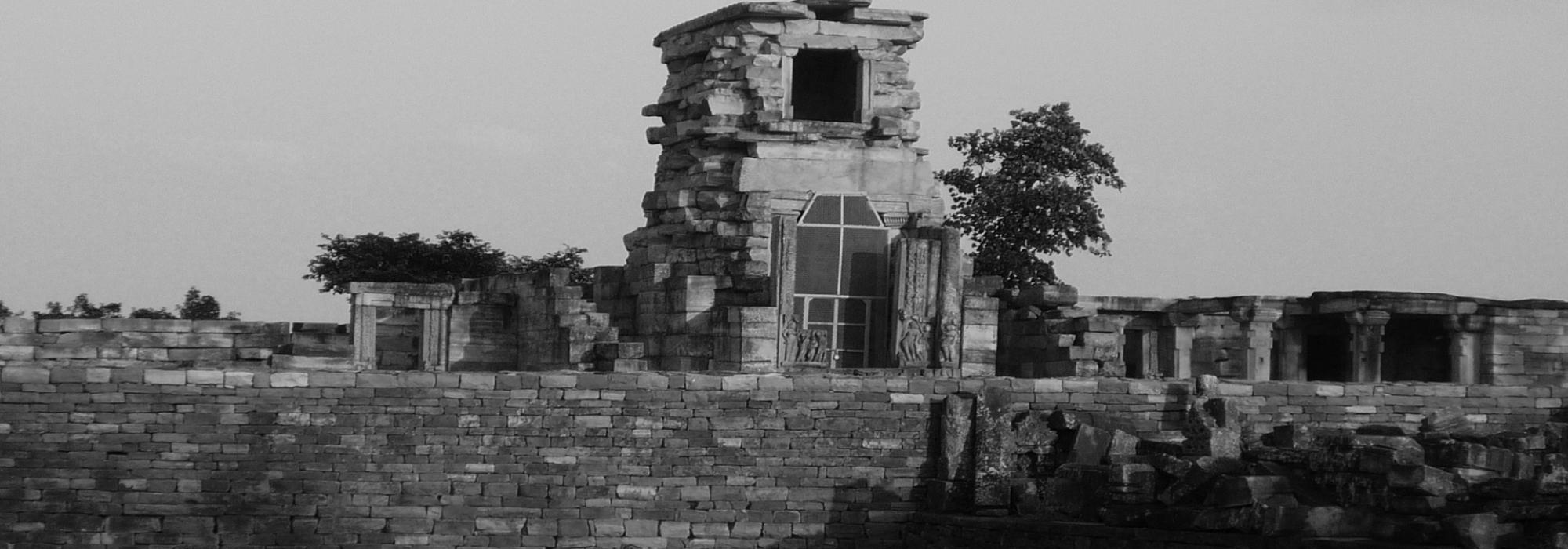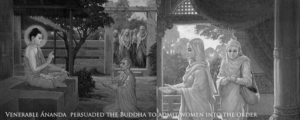Among Ashoka’s numerous children, Tivra, Mahendra, Kunala, and Jaluka were prominent. The Vāyu and other Purāṇas contain several details about this. Among them, Kunala ruled the kingdom after Ashoka. After his eight-year rule, the next generation took charge. Brihadratha was one among them. Some opine that he was the grandson of Ashoka. However, historical studies reveal otherwise. Samprati Chandragupta was a grandson of Ashoka and his son was Brihadratha. All of them were uniformly weak rulers, bereft of kṣātra.
Samprati Chandragupta became a Jain and performed sallekhana (fasting till death) with Bhadrabahu Muni in the renowned Chandragiri hills at Shravanabelagola. Some people have misunderstood this historical fact and are under the illusion that this was Chandragupta Maurya, the disciple of Kautilya, destroyer of the Navanandas. In this regard Rāṣṭrakavi M Govinda Pai has carried out an exhaustive study and has established the truth. [Chandragupta Maurya was in fact the grandfather of Ashoka and lived close to a century before him (c. 4th century BCE).] Incidentally, we mention this because when different facets of history cannot be definitively established, one needs to delve into the primary sources and come to a conclusion. Govinda Pai has done precisely this.
The explosion of ahiṃsā that emanated during the post-Ashokan period culminated in multifaceted decrepitude. But then Bhagavān Buddha never advocated such inertia. Even among Tirthankaras like Vardhamana Mahavira, none had gone to such extremes. After all, Bharata was ruled by a host of Jain kings all of whom waged numerous wars. None of them resorted to inaction in the name of ahiṃsā. For that matter ahiṃsā is held as a sacred vrata in Jainism to the extent that it takes on a rather severe tenor. Ahiṃsā does not have this sort of severity in Buddhism. In fact, Buddhist bhikkhus are not prohibited from eating the meat given to them as piṇḍa-pāta (the food given as alms). Buddhism, which has pervaded the world, has not insisted upon strict vegetarianism. But it is not so in Jainism, which while adhering to the varṇa system, insists upon vegetarianism. There are two kinds of vratas in Jainism – aṇu-vrata and mahā-vrata. The latter is for Tirthankaras, munis, and ascetics but the former alone is prescribed for ordinary Jains.
There is a great deal of emphasis laid on ahiṃsā in Sanātana-dharma as well. But then what would ensue if the principles of saṃnyāsa are enforced upon householders! A saṃnyāsi is ordained to offer abhaya (blessing, spiritual protection) to all and is prohibited from maintaining agni (sacred fire) because in order to keep the fire, trees have to be cut and in general, fire can potentially cause trouble to the world. If one has to maintain agni, he has to offer ahuti; he will have to become a householder. Moreover, fire is not used even for the last rites of a saṃnyāsi; typically they are buried in the ground, thrown in water, or thrown to the winds. These are different means of performing the last rites in a non-violent fashion.
In our tradition, the degree of ahiṃsā has been prescribed differently for each āśrama. Therefore blanket statements like ‘ahiṃsā in Buddhism and Jainism have had ill-effects’ are unfounded. Perhaps Ashoka did not grasp this truth with wisdom. Being a king, his embrace of extreme ahiṃsā was inappropriate. At one stage, Ashoka had brought almost all of India under his rule. Modern historians opine that the Mughals under Aurangzeb, and later the British held sway over such vastness. But when we observe how this vast empire of Ashoka collapsed like a house of cards, the extent of administrative laxity becomes evident. The Suttapitaka tells us how farsighted Buddha was in anticipating this.
We can provide an example from the life of Bhagavān Buddha. One day, Buddha’s confidant and close relative (from his householder days), the eminent Ānanda approaches his guru Buddha with Yashodhara [Buddha’s wife when he was a prince] in tow and asks, “Please grant saṃnyāsa to women as well.” When Buddha replies, “No, it can’t be done,” Ānanda asks, “Why don’t you prescribe saṃnyāsa to women? You say yourself that all are equal, don’t you?” Buddha replies, “No, the sangha will lose its way.” Ānanda refuses to accept Buddha’s view that the entry of women into the sangha will destroys its discipline. He persists in his argument. Finally Buddha says, “I thought that the sangha will flourish for a thousand years. Given what you suggest, it will face destruction in five hundred years!”
By the time of Ashoka’s reign, about two hundred and fifty years had elapsed since Buddha’s death. By then considerable laxity had enveloped the sangha. "Bikkhunis (female mendicants), no matter how senior had to compulsorily stand up and pay respects in the presence of even the juniormost bhikkhu (male monk); they had to be under their supervision at all times." Such are the rules laid down by Buddha in the Vinayapiṭaka. One mustn’t construe such rules as sexist; these were not strictures but guidelines to maintain discipline, not a means to disparage women. In sum, we must mention that Buddha had noticed all these.
Didn’t any of this come to Ashoka’s attention? The Buddhism that Ashoka encountered had already weakened. The traditional practices had dried up. After Buddha’s mahāparinirvāṇa, his prominent disciplines like Ānanda, Upali, and Mahakashyapa compiled his teachings in the form of the three piṭakas and placed them before the first sangīti. Some people began complaining, “We don’t agree with what you say. We won’t accept your compilation. As far as we remember, this is not Buddha preached.” They later came to be known as Teravādins (Sthāviravādins). The rest came to be known as Mahāsānghis.
The sangha that split in this manner eventually splintered into eighteen categories. It becomes clear how easily and quickly a great principle gets corrupted. Perhaps, this was the reason devotion and rituals gained prominence over inquiry and mindfulness by the time of Ashoka.
Samprati Chandragupta’s son Brihadratha was the last king in the Maurya lineage. The Yavanas (Greeks) invaded Magadha during his reign. We can only imagine the state of military security at the time of such an invasion. Banabhatta records this in his Harshacharita, which is a primary source of great importance.
Around this time, the great general Pushyamitra came to the forefront. Eventually, he earned great renown as the progenitor of the Shunga dynasty. A few opine that he hailed from the Kāshyapa gotra. Other sources mention his gotra as Bhāradvaja. Be that as it may, his contemporary was Patanjali who wrote the Mahābhāṣya, a commentary on Pāṇinian sūtras. Pushyamitra was also the one who successfully checked alien invasions. The Mauryan Empire had weakened to the extent that the Greeks of Bactria (Bahlika) were able to penetrate even Vidisha and Vidarbha. The one who rectified all this and secured peace for our people was Pushyamitra, a brāhmaṇa, who reposed faith in kṣātra, thus adhering to the values of our ancients.
Translated from the original Kannada by Sandeep Balakrishna and Hari Ravikumar.

















































Comments